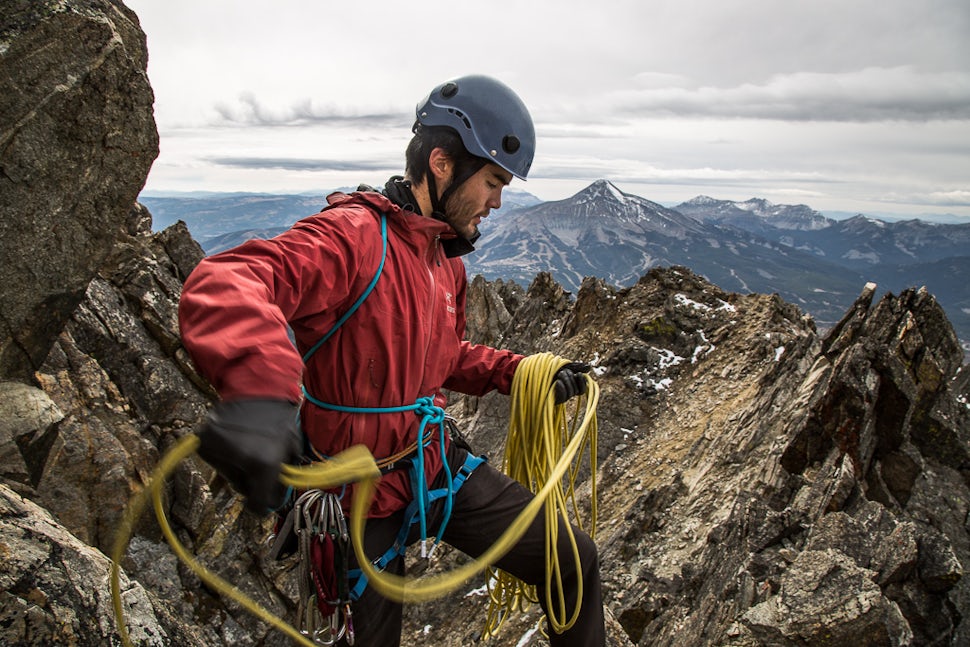5 Knots That Could Save Your Life in the Backcountry
Hope for the best, prepare for the worst.

As a firefighter, knowing how to tie secure knots is a critical skill that I’ve developed and practiced. Knowing knots in the backcountry can make life easier and your trek more efficient, but most importantly a well-tied knot can potentially save your life. I’ve narrowed the following list down to 5 critical knots that can save your life.

1. Figure Eight Knot and Its Variations
As a climber, the figure eight and its variations are an obvious choice for a knot that can save your life. Tying a simple figure eight will keep you from rappelling yourself off the end of a rope and is the perfect foundation for learning other life-saving knots.
The figure eight follow through is another integral knot to climbing for securing yourself, or anything for that matter, to the end of a rope. You would use this when you need to secure the rope to a hole or space that does not have an opening, like your harness or a link in a chain. Accompanied with a stopper this is a bomber, no-slip knot that will tighten on itself under tension and won’t cinch down on the load.
The final variation I’m going to mention is the figure eight on a bight (I know what you may be thinking, but it's not a spelling error). This knot creates a loop in the middle of your rope for securing something to, creating a foot or handhold, or many other creative uses. This knot is especially valuable because it maintains 85% of the rope’s strength. This not is tied very similarly to the standard figure 8 and serves has similar results as the follow through, but is used for different situations. You would use this if you need a loop, but do not need to fix the loop to a closed space like your harness or a link in a chain.

2. Trucker’s Hitch
The trucker’s hitch is used to secure heavy loads. This works for tying anything from a canoe to the roof of a car or securing a tarp in gale-force winds. This knot let’s you cinch down on the working end of the rope to create high tension. It’s ability to secure loads of all sizes and its adaptability in many circumstances makes it very useful knot to know in difficult circumstances.
3. Clove Hitch
Another important hitch is the clove hitch. It’s value comes from a situation where you need to lash something together, say for making a shelter or makeshift raft, because it’s easy to tie and doesn’t slip or get loose. Being able to lengthen or shorten this knot without untying it make adjustments quick and easy – an important thing in the backcountry.
4. Sheet Bend
Used for adjoining ropes, a sheet bend is another essential backcountry knot. It’s very simple to tie even if the ropes are different sizes and won’t slip on you especially if you tie a double sheet bend. When lengthening rope or lashing multiple ropes together with a fast tying knot that you can depend on is especially useful.
5. Bowline
The last knot I’m going to mention is the bowline. It is by far the most versatile, dependable and useful. This knot is easy to tie around something, through something or around yourself (even with one hand) which is perfect in survival situations where seconds count. It’s also great for activities such as setting up a shelter, securing gear (like in a bear hang). This knot won’t cinch down after tying, will never slip and is easy to untie.

While there are many of useful knots in the backcountry, I’ve touched on a few that can directly influence your survival in tough situations. The best thing to do is to tap into other resources (books, websites, or people with experience) for learning new knots and make sure you stay proficient with these vital ones by spending time practicing them before going on any sort of backcountry adventure that may put you into a survival situation. If the worst case scenario does play out, you'll be that much more confident, comfortable, and most importantly....alive.
Check out all of Stephen's awesome adventures and articles on his Outbound Profile
Cover photo: Seth Langbauer
We want to acknowledge and thank the past, present, and future generations of all Native Nations and Indigenous Peoples whose ancestral lands we travel, explore, and play on. Always practice Leave No Trace ethics on your adventures and follow local regulations. Please explore responsibly!
Do you love the outdoors?
Yep, us too. That's why we send you the best local adventures, stories, and expert advice, right to your inbox.








